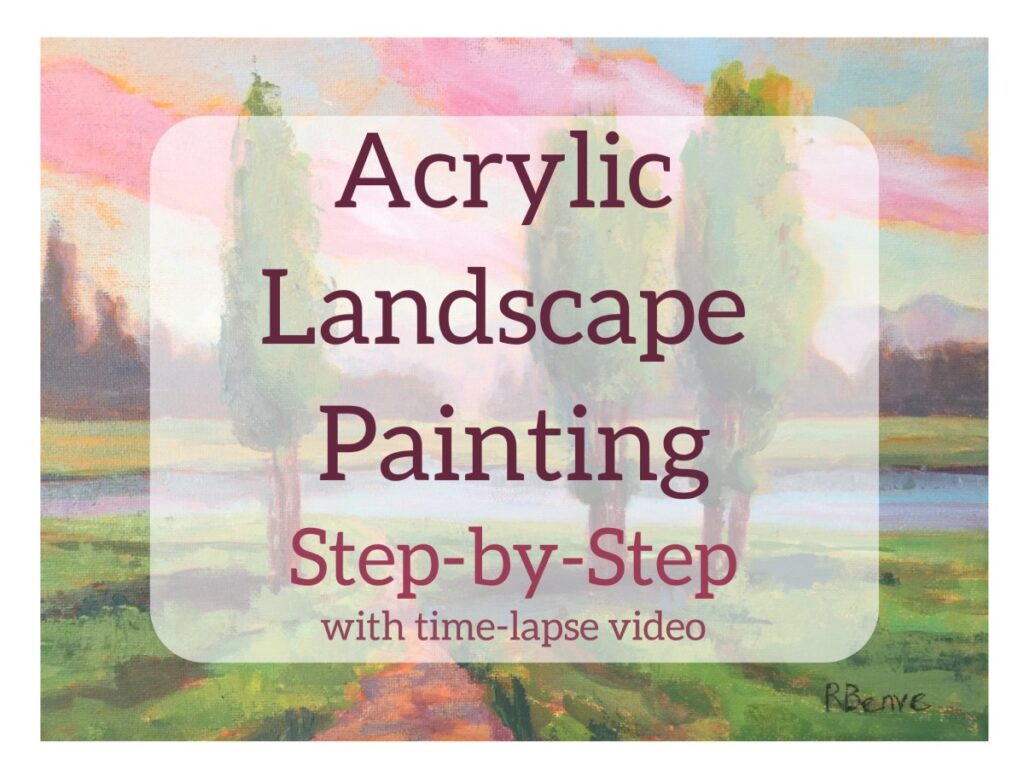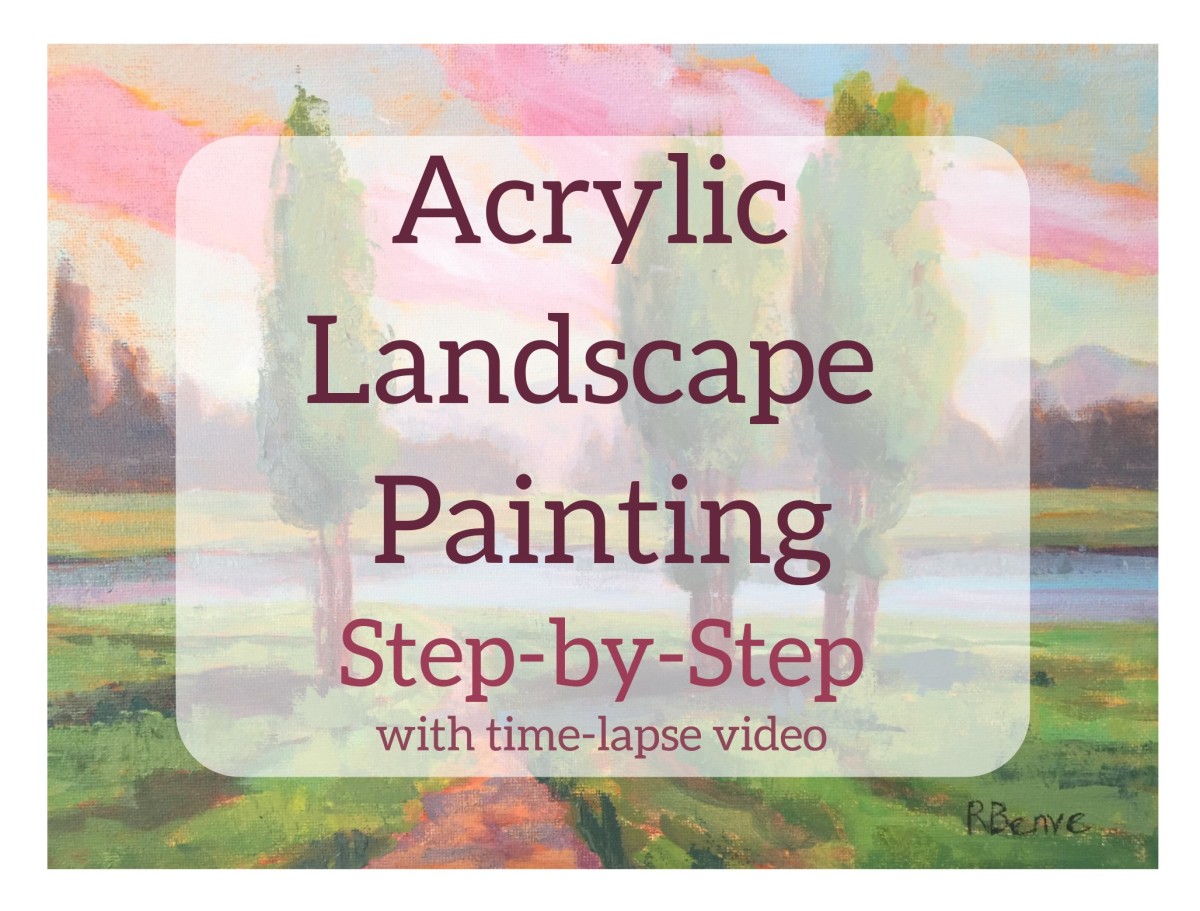
How to Paint Landscapes in Acrylic: A Comprehensive Guide
Acrylic paints offer a versatile and forgiving medium for artists of all levels. Their quick-drying nature and vibrant colors make them an excellent choice for capturing the beauty and dynamism of landscapes. This comprehensive guide will walk you through the essential steps of how to paint landscapes in acrylic, from selecting your materials to mastering fundamental techniques. Whether you’re a beginner picking up a brush for the first time or an experienced artist looking to refine your skills, this article provides valuable insights into creating stunning acrylic landscape paintings.
Gathering Your Materials
Before diving into the painting process, it’s crucial to assemble the necessary materials. Having everything readily available will streamline your workflow and allow you to focus on the creative aspects of how to paint landscapes in acrylic.
Acrylic Paints
Invest in a set of high-quality acrylic paints. Student-grade paints are more affordable but may lack the pigment concentration and lightfastness of professional-grade options. A basic palette should include:
- Titanium White
- Ivory Black
- Cadmium Yellow Medium
- Cadmium Red Medium
- Alizarin Crimson
- Ultramarine Blue
- Phthalo Blue
- Burnt Sienna
- Burnt Umber
You can expand your palette later as you gain experience and explore different color combinations. Learning how to paint landscapes in acrylic often involves color mixing, so understanding your core colors is vital.
Brushes
A variety of brush shapes and sizes is essential for creating different effects. Consider these options:
- Flat Brushes: Ideal for broad strokes, covering large areas, and creating sharp edges.
- Round Brushes: Perfect for detail work, lines, and blending.
- Filbert Brushes: A versatile option that combines the characteristics of flat and round brushes.
- Fan Brushes: Useful for blending and creating textures, such as grass or foliage.
Synthetic brushes are a good choice for acrylics as they are durable and easy to clean. Proper brush care will extend their lifespan and improve your overall painting experience. Knowing which brush to use is part of how to paint landscapes in acrylic effectively.
Canvas or Painting Surface
Stretched canvas is a popular choice for acrylic painting, but you can also use canvas boards, wood panels, or even heavy-duty paper. Prime your surface with gesso to create a smooth, slightly textured surface that will accept the paint well. Pre-gessoed canvases are readily available and offer convenience. The surface you choose influences how to paint landscapes in acrylic, affecting paint application and texture.
Palette
A palette is a surface for holding and mixing your paints. Disposable paper palettes are convenient, but a reusable plastic or glass palette is more environmentally friendly. A stay-wet palette can help prevent your acrylics from drying out too quickly.
Other Essential Supplies
- Water container for cleaning brushes
- Palette knife for mixing paints
- Paper towels or rags for wiping brushes
- Easel (optional but recommended)
- Reference photos or sketches
- Acrylic mediums (optional, for altering paint properties)
Understanding Basic Techniques
Mastering fundamental techniques is essential for how to paint landscapes in acrylic. Practice these techniques to build your skills and confidence.
Color Mixing
Acrylics allow for easy color mixing. Start with a small amount of each color and gradually add more until you achieve the desired hue. Keep a color chart of your mixes to help you replicate them later. Understanding color theory and mixing principles is crucial for how to paint landscapes in acrylic realistically.
Layering
Acrylics dry quickly, allowing you to build up layers of color. This technique is useful for creating depth, texture, and subtle variations in tone. Allow each layer to dry completely before applying the next to prevent muddying. Layering is a key technique in how to paint landscapes in acrylic to achieve realistic effects.
Blending
Blending involves smoothly transitioning between colors. You can blend acrylics while they are still wet, or you can use a retarder medium to slow down the drying time. Techniques like dry brushing and scumbling can also be used for blending. Skillful blending dramatically improves the quality of how to paint landscapes in acrylic.
Dry Brushing
Dry brushing involves using a brush with very little paint on it to create a textured effect. This technique is useful for depicting foliage, grass, and other details. Practice controlling the pressure and angle of your brush to achieve the desired effect. Dry brushing is a fantastic technique in how to paint landscapes in acrylic for adding texture.
Washing
A wash is a thin, translucent layer of paint that is used to create a subtle color effect. Washes are often used to create atmospheric perspective or to add warmth or coolness to a painting. Dilute your acrylic paint with water or a glazing medium to create a wash. Experimenting with washes is part of mastering how to paint landscapes in acrylic.
Step-by-Step Landscape Painting Process
Now, let’s walk through the process of how to paint landscapes in acrylic, step by step.
Step 1: Choose Your Subject and Composition
Select a landscape that inspires you. Consider the composition, focusing on elements like the horizon line, focal point, and leading lines. A strong composition is the foundation of a successful painting. The initial subject choice impacts how to paint landscapes in acrylic because of the colors and textures involved.
Step 2: Sketch Your Composition
Lightly sketch your composition onto your canvas using a pencil or charcoal. Pay attention to the proportions and placement of key elements. This step helps you plan your painting and avoid mistakes later on. This initial sketch is a crucial part of how to paint landscapes in acrylic.
Step 3: Block in the Basic Colors
Using diluted acrylics, block in the basic colors of your landscape. Focus on large shapes and masses, rather than details. This step helps you establish the overall color scheme and value structure of your painting. This “blocking in” stage is a core technique in how to paint landscapes in acrylic.
Step 4: Add Details and Refine
Once the basic colors are in place, begin adding details and refining your painting. Use smaller brushes to create finer lines and textures. Pay attention to light and shadow to create depth and dimension. This detailing phase is when you truly see how to paint landscapes in acrylic come to life.
Step 5: Finishing Touches
Step back and evaluate your painting. Add any final touches or adjustments as needed. Consider adding highlights, shadows, or subtle color variations to enhance the realism and visual interest of your landscape. The finishing touches are what makes your landscape painting unique and demonstrates your expertise in how to paint landscapes in acrylic.
Tips for Painting Realistic Landscapes
Achieving realism in landscape painting requires careful observation and attention to detail. Here are some tips to help you create more realistic acrylic landscapes.
Observe Light and Shadow
Pay close attention to how light and shadow interact in your landscape. Notice the subtle variations in value and color that create depth and form. Accurately depicting light and shadow is crucial for creating a sense of realism. Understanding light and shadow is paramount to how to paint landscapes in acrylic realistically.
Use Atmospheric Perspective
Atmospheric perspective is the effect that makes distant objects appear lighter, less saturated, and less detailed than objects that are closer. Use this technique to create a sense of depth in your landscape. Atmospheric perspective is a powerful tool in how to paint landscapes in acrylic for creating depth.
Pay Attention to Color Temperature
Color temperature refers to the warmth or coolness of a color. Warm colors (reds, oranges, yellows) tend to advance, while cool colors (blues, greens, purples) tend to recede. Use color temperature to create depth and visual interest in your landscape. Being aware of color temperature is vital when learning how to paint landscapes in acrylic.
Practice Regularly
The more you practice, the better you will become at painting landscapes in acrylic. Don’t be afraid to experiment with different techniques and approaches. The key to improving is consistent practice and a willingness to learn from your mistakes. Consistent practice is the best way to master how to paint landscapes in acrylic.
Advanced Techniques and Considerations
Once you are comfortable with the basics, you can explore more advanced techniques to elevate your acrylic landscape paintings.
Using Acrylic Mediums
Acrylic mediums can alter the properties of your paints, such as their viscosity, drying time, and transparency. Experiment with different mediums to achieve specific effects. For instance, a glazing medium can create smooth, translucent layers, while a texture gel can add impasto effects. Understanding and utilizing acrylic mediums helps refine how to paint landscapes in acrylic.
Creating Texture
Texture can add visual interest and realism to your landscapes. Use techniques like dry brushing, impasto, and sgraffito to create different textures. You can also incorporate materials like sand or modeling paste to add physical texture to your painting. Experimenting with textures enriches how to paint landscapes in acrylic.
Painting Skies
Skies are an essential element of most landscape paintings. Practice painting different types of skies, such as clear blue skies, cloudy skies, and dramatic sunsets. Pay attention to the subtle color variations and gradations in the sky. Mastering sky painting is essential for how to paint landscapes in acrylic.
Working with a Limited Palette
Challenge yourself by working with a limited palette of colors. This can help you improve your color mixing skills and create a more harmonious color scheme. A limited palette forces you to be more creative with your color choices and enhances your understanding of color relationships. Using a limited palette is a great exercise to improve how to paint landscapes in acrylic.
Conclusion
Learning how to paint landscapes in acrylic is a rewarding journey that combines technical skill with artistic expression. By mastering the fundamental techniques, observing the world around you, and practicing regularly, you can create stunning acrylic landscape paintings that capture the beauty and essence of nature. Remember to experiment, have fun, and let your creativity guide you. [See also: Acrylic Painting Techniques for Beginners] [See also: Best Acrylic Paints for Landscape Painting]

